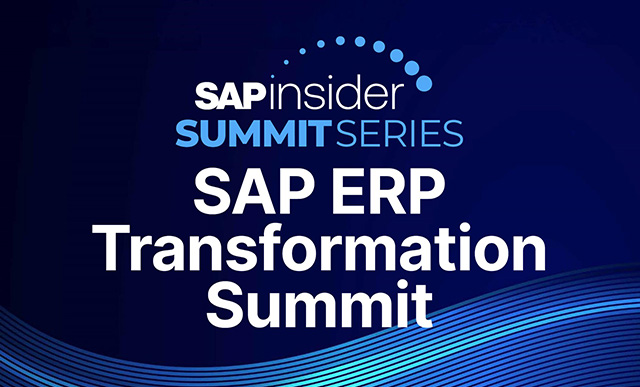SAP PLM
Filter By
Browse By
- SAP Analytics and AI
- SAP Application Development and Integration
- All SAP Application Development and Integration
- SAP ABAP
- SAP ABAP Development Tools
- SAP ABAP Test Cockpit
- SAP API Management
- SAP BAPI
- SAP Basis
- SAP BRF
- SAP Business Application Studio
- SAP CMS
- SAP Design Studio
- SAP Development Tools
- SAP DevOps
- SAP EAI
- SAP EDI
- SAP Extension Suite
- SAP Fiori
- SAP Fiori Elements
- SAP Integration Suite
- SAP Low Code Application Development
- SAP Low Code Automation
- SAP Netweaver
- SAP Release Management
- SAP UI5
- SAP Web Application Server
- SAP Web IDE
- SAP Business Process Management
- SAP Center of Excellence
- SAP CIO
- SAP Customer Experience
- SAP Data and Data Management
- All SAP Data and Data Management
- SAP BW
- SAP BW/4HANA
- SAP Crystal Reports
- SAP Data Archiving
- SAP Data Center
- SAP Data Governance
- SAP Data Integration
- SAP Data Migration
- SAP Data Quality
- SAP Data Services
- SAP Data Strategy
- SAP Data Visualization
- SAP Data Warehouse Cloud
- SAP DMS
- SAP Document Control
- SAP EIM
- SAP ETL
- SAP ETL Tools
- SAP HANA
- SAP HANA Administration
- SAP HANA Deployment Infrastructure
- SAP HANA Studio
- SAP Master Data
- SAP Master Data Governance
- SAP MDM
- SAP Enterprise Architect
- SAP Enterprise Asset Management
- SAP ERP
- SAP Finance
- All SAP Finance
- SAP Accounting
- SAP AR AP
- SAP Asset Accounting
- SAP Billing Systems
- SAP BPC
- SAP BRIM
- SAP Cash Management
- SAP Central Finance
- SAP Controlling
- SAP COPA
- SAP Cost Center Accounting
- SAP Currency Risk
- SAP e-invoicing
- SAP FICO
- SAP Finance Automation
- SAP Advanced Financial Closing
- SAP Financial Consolidation
- SAP Financial Planning
- SAP FX Risk
- SAP General Ledger
- SAP Global Tax Management
- SAP Hyperion
- SAP Order to Cash
- SAP Payment Processing
- SAP Profitability Analysis
- SAP Rebate Management
- SAP S/4HANA Finance
- SAP SWIFT Compliance
- SAP Treasury Management
- SAP Universal Journal
- SAP Governance Risk and Compliance
- SAP Human Capital Management
- SAP Intelligent Technologies
- SAP Platform and Technology
- All SAP Platform and Technology
- SAP Business Technology Platform
- SAP Cloud
- SAP Cloud Connector
- SAP Cloud Integration Platform
- SAP Cloud Migration
- SAP Cloud Platform
- SAP Cloud Providers
- SAP Cloud Strategy
- SAP Digital Signature
- SAP Container Platform
- SAP HANA Enterprise Cloud
- SAP Digital Asset Management
- SAP Smart Forms
- SAP HEC
- SAP Digital Integration Hub
- SAP Hyperscalers
- SAP Infrastructure
- SAP Messaging
- SAP Quality and Testing
- SAP Security
- SAP Spend Management
- SAP Supply Chain Management
- All SAP Supply Chain Management
- SAP APO
- SAP Asset Management
- SAP Business Network
- SAP Digital Manufacturing Cloud
- SAP Digital Twin
- SAP EWM
- SAP IBP
- SAP Inventory Management
- SAP Label Printing
- SAP Logistics
- SAP Manufacturing
- SAP Manufacturing Automation
- SAP MES
- SAP MII
- SAP MM
- SAP MRO
- SAP MRP
- SAP Order Management
- SAP Plant Maintenance
- SAP PLM
- SAP Production Planning
- SAP S&OP
- SAP SD
- SAP SPM
- SAP Supply Chain Planning
- SAP Track and Trace
- SAP Transportation Management
- SAP System Administration
What Is Product Lifecycle Management?
Product lifecycle management (PLM) includes the phases of managing a product from its inception until its disuse. These phases include design, material sourcing, manufacturing, and customer sale. A structured and collaborative PLM process is essential to ensure that all the necessary business units are included in product decision-making. A siloed approach to PLM leaves the company vulnerable to costly defects and development delays.
SAP Product Lifecycle Management
SAP offers its SAP Product Lifecycle Management (SAP PLM) solution to help companies design their products, bring them to market faster, and achieve larger profit margins.
What Is Product Lifecycle Management?
Product lifecycle management (PLM) includes the phases of managing a product from its inception until its disuse. These phases include design, material sourcing, manufacturing, and customer sale. A structured and collaborative PLM process is essential to ensure that all the necessary business units are included in product decision-making. A siloed approach to PLM leaves the company vulnerable to costly defects and development delays.
SAP Product Lifecycle Management
SAP offers its SAP Product Lifecycle Management (SAP PLM) solution to help companies design their products, bring them to market faster, and achieve larger profit margins.
Key capabilities of SAP PLM include:
- Thorough portfolio management
- Product cost calculation and simulation
- Simulation-based digital twin and virtual sensors
- Product collaboration and visualization.
Vendor partners for SAP PLM include: 1EQ, CENIT AG, CIDEON Software GmbH, Linx-AS LLC, and SEAL Systems.
Intelligent Product Lifecycle Management
With digital technologies now playing a critical role for companies, it’s not surprising that artificial intelligence, machine learning, and predictive analytics are being integrated into the PLM process. According to SAPinsider’s Intelligent PLM Benchmark Report, PLM “can provide strategic value to an organization, driving top- and bottom-line improvements across the product lifecycle. However, powered by analytics tools that allow critical information to be accessed quickly and easily, agile and intelligent PLM is poised to take the use of data and intelligence across the product lifecycle to a whole new level.”
Key Consideration for SAPinsiders
- Inside a Multi-Phased SAP Digitization Journey II. Learn how Varian Medical Systems leveraged the SAP PLM solution to ensure its products were compliant with the European Union’s Restriction of Hazardous Substances (RoHS) Directive.
- Blue Diamond Growers Cultivates Quality. In an effort to transform its research and development (R&D) processes and reduce time to market for products, Blue Diamond Growers selected SAP PLM as the solution to integrate with its SAP ERP suite.
- Support for Connected Products Begins with Design. The design of connected products redefines R&D’s role in how it serves an evolving PLM strategy for a digital enterprise. Having real-time insights into a product’s ongoing performance presents a wealth of opportunities and challenges. To meet both, organizations must ensure R&D has the tools it needs to make smart decisions in support of smart products, the article argues.
134 results
-

 Premium
Premium
RFID Primer for the SAP SCM Professional
Reading time: 13 mins
Introducing RFID to a shop floor, warehouse, or retail environment requires that the SAP professional learn about new kinds of hardware and standards. Discover the differences among the different RFID tags and readers, and see how you might integrate them into an SAP landscape. Key Concept The SAP Auto-ID Infrastructure (AII) integrates data from smart-item...…
-

 Premium
Premium
Track Service Contract Prepayments in a Hidden Project System Option
Reading time: 8 mins
A common problem with service contracts is how to account for them correctly in financial statements, taking into account existing customer prepayments and revenue in excess. A customizing setting, hidden in the account determination of the Project System (PS), allows you to generate additional G/L entries to move customer prepayments into the receivables section of...…
-

 Premium
Premium
A System Administrator’s Practical Guide to SAP System Landscape Directory (SLD)
Reading time: 2 mins
Administrators often use a spreadsheet or database program to manually keep track of the systems in their landscapes, but these won’t tell you whether two systems are compatible, and the ever-increasing size and geographical spread of landscapes makes this task difficult at best. SAP System Landscape Directory (SLD) serves as a central repository of information...…
-
-

- SAP System Administration
 Premium
Premium
A Step-by-Step Guide to System Refresh on the Quality Assurance Server
Reading time: 6 mins
IT Use this simple procedure for your system refresh and you can get and test the latest scenarios, materials, views, and sales area data on a quality assurance server (QAS) instead of the production server. Aside from regulatory compliance, there are many benefits to carrying out regular SAP system refreshes. The main benefit of replicating...…
-

 Premium
Premium
A Step-by-Step Guide to Calculate Number of Work Days in SAP HANA Studio
Reading time: 24 mins
A common requirement for any project management reporting is to calculate the number of business days between two dates, excluding holidays, which have already been used on the project. These dates can be planned start and end dates, actual start and end dates, or baseline start and end dates for a project, phase, or task...…
-

 Premium
Premium
Improve Visibility of Critical Components Planning with SAP Integrated Business Planning for Sales and Operations
Reading time: 44 mins
Learn how to meet the challenges of visibility and planning of critical components by leveraging SAP Integrated Business Planning for sales and operations. Key Concept SAP Integrated Business Planning for sales and operations is a solution powered by SAP HANA that supports an organization’s end-to-end sales and operations planning business process. In SAP Integrated Business...…
-

- SAP Solution Manager
 Premium
Premium
Automate Your Business Blueprint Generation for SAP Solution Manager 7.1
Reading time: 18 mins
Many companies struggle with the documentation of the business processes they use in their productive SAP systems. Several applications from SAP and its partners are available to solve this challenge, but require a significant effort. A new ABAP program provided by SAP Solution Manager requires a very low effort to build an SAP module-oriented Business...…
-
-

- SAP Business Suite
 Premium
Premium
SAP Data Services Part 1: Integrating with SAP Business Suite Sources
Reading time: 15 mins
Gain an overview of SAP Data Services and how to extract data by leveraging SAP Business Suite extractors. Key Concept SAP Data Services can integrate with the SAP Business Suite to transport data by using extractors that streamline the extraction, transformation, and loading (ETL) process for this type of deployment. SAP Data Services (formerly SAP...…
-

- SAP Release Management
 Premium
Premium
New End-to-End Project Deployment Process in Solution Manager 7.1 and 7.2
Reading time: 30 mins
Learn about developments done with multiple large corporations for the IT Requirement-to-Deploy process in SAP Solution Manager 7.1 and 7.2. Follow the management of the IT Service Management (ITSM) and Application Lifecycle Management (ALM) spaces from requirement management, to design, build, test, and deployment in an integrated fashion. Key Concept The Requirement-to-Deploy focus solution is...…
-

 Premium
Premium
Expedite Your BI Implementation with SAP Best Practices
Reading time: 11 mins
Find out about the content and methodology of SAP Best Practices for Business Intelligence intended for small to mid-sized businesses. SAP Best Practices are preconfigured, tested, and documented scenarios you can use during the implementation process. Key Concept SAP Best Practices is the brand name for preconfigured business scenarios that SAP delivers. They are designed...…
Become a Member
Unlimited access to thousands of resources for SAP-specific expertise that can only be found here.
Become a Partner
Access exclusive SAP insights, expert marketing strategies, and high-value services including research reports, webinars, and buyers' guides, all designed to boost your campaign ROI by up to 50% within the SAP ecosystem.
Upcoming Events
-

SAPinsider ERP Transformation Summit
October 22 - 23, 2025
New Orleans, Louisiana
United States
View Event
Related Vendors
Your request has been successfully sent

